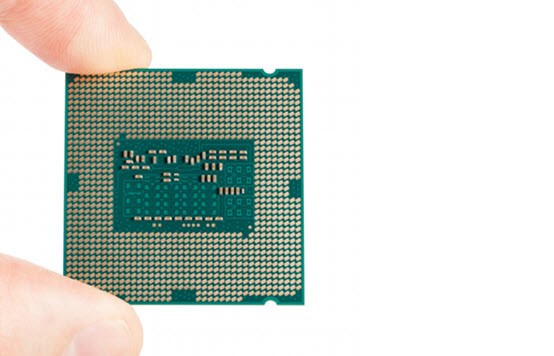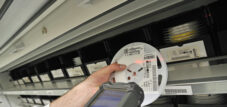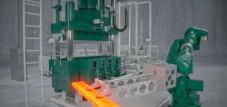Warehouse management of SMD components
Language selection 📢
Published on: April 22, 2014 / update from: April 24, 2021 - Author: Konrad Wolfenstein
[In collaboration with Kardex Remstar – ADVERTISING]
What are SMDs?
The term surface-mounted device (SMD) is a term from the electronics industry and means surface-mountable components. SMDs have an extremely small design and are the result of the increasing miniaturization of electronic components. In contrast to conventional components, SMDs are glued directly to the surface of the circuit board and then soldered and are no longer plugged into them or wired to them. This eliminates the need for complex drilling on the circuit boards, which is necessary with conventional components. The small format of SMD has led to increasingly lighter and more cost-effective starting products for the electrical industry.
After production, SMD components are usually transported in belts which are wound on rollers. When production begins, these rolls are made available to the assembly machines for production using trolleys – the so-called feeders. Larger SMD components are often packaged in plastic rods or in small pallets – so-called trays. While trays can be inserted directly into the pick and place machines, feeders are also required for the bars.
Then the boards to be placed through a row, in which the robot puts the required SMD components on the board and “glued”.
The initial SMDs required for the production of electronic components are usually ordered, delivered and stored in large quantities so that sufficient quantities are available at the start of production. After completion of production, unused SMDs are removed
- stored again
- provided for the next production
- scrapped
Efficient picking of the feeders with SMD rolls plays a crucial role in the error-free and efficient assembly of the circuit boards with the SMDs. The core goal is to make the upstream and downstream processes, such as storage and retrieval of the SMD rolls, their provision on feeders and the return storage of excess material after the assembly order, productive and cost-effective. The quick changeover of the SMD lines without loss of time and material is another factor. For this purpose, the various storage and provision systems - such as circulation racks or storage lifts - are equipped with application-specific software that controls the use of the SMD rollers.
Customer requirements
The principle of intermediate storage of electronic components such as SMD components in the immediate vicinity of the assembly lines is becoming an increasingly important customer requirement. It results from an optimized material flow with ever shorter setup and downtimes and requires complete traceability of the SMD through the company's ERP systems.
When storing these parts, customers are looking for complete solutions that, in addition to providing the hardware (the shelf storage), allows them to monitor and control the complex SMD production and give them the opportunity to carry out a permanent inventory of the SMD stocks.
The software within the package plays an important role, recording the movement data of the stored goods and tracking the inventory as well as the useful life of the SMD components. The assignment of the material to the respective production order is also documented. The system recognizes the availability of components for the existing orders and reserves the requirements. Any shortages identified are reported immediately and reordered or requested again from the main warehouse.
In summary, the following customer requirements arise:
- permanent inventory control
- Increasing picking accuracy
- Storage of components as needed
- Reduction in space requirements
- Optimization of access times
- Increased safety and ergonomics for staff in the workplace
























